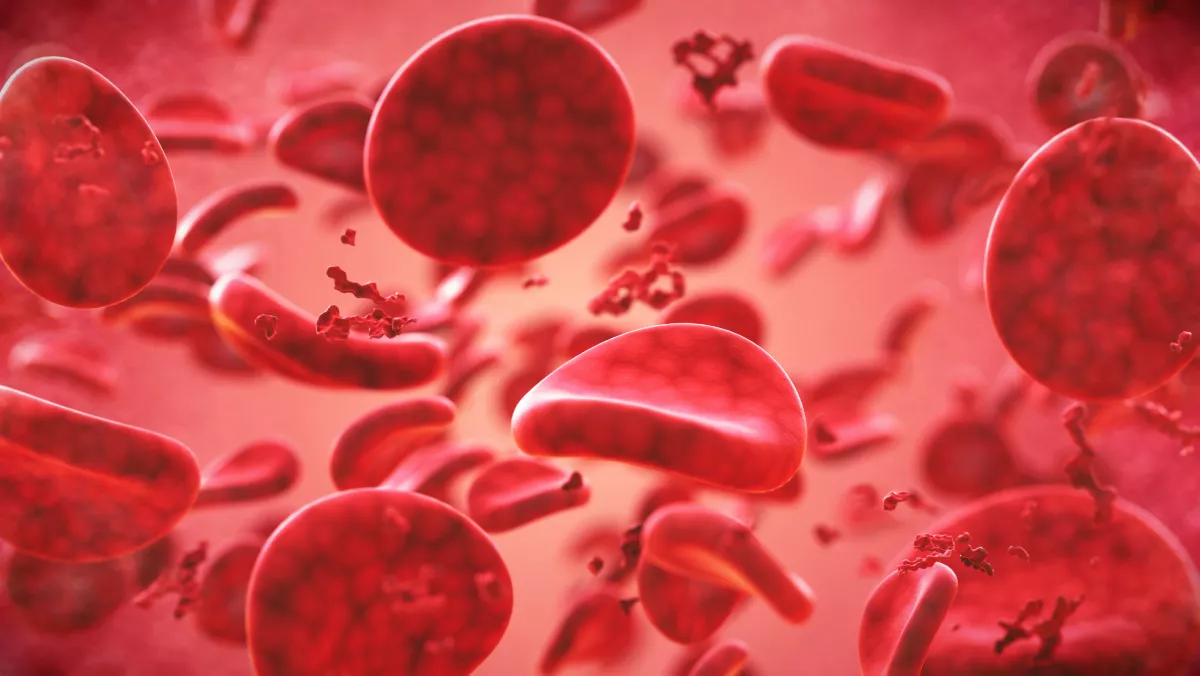
he human body is truly complex. Its immune system protects it. Sometimes, the immune system makes a mistake. It attacks healthy cells by accident. This can lead to autoimmune diseases. Autoimmune hemolytic anemia is one such condition. Here, red blood cells become targets. The body sees them as foreign. It then destroys them rapidly. This leads to a shortage of red cells. It causes anemia and its symptoms. Understanding this condition is vital.
“Sometimes, the immune system makes a mistake.”
Our immune system is a defense network. It normally identifies threats. Bacteria, viruses, and foreign invaders are its targets. It produces antibodies to neutralize these threats. But in autoimmune diseases, something goes wrong. The immune system loses its ability to differentiate. It cannot tell self from non-self. It mistakenly attacks its own healthy tissues. This misdirection causes significant harm. The body turns against itself. This is a fundamental flaw in its function.
“Red blood cells become targets.”
Red blood cells are essential. They carry oxygen throughout the body. They deliver it to organs and tissues. In autoimmune hemolytic anemia (AIHA), these cells suffer. Antibodies attach to their surface. They mark them for destruction. The spleen often plays a key role. It removes these marked red cells. The liver can also be involved. This process is called hemolysis. It means red blood cell destruction. The body cannot replace them fast enough. This leads to a drop in red cell count.
“This leads to a shortage of red cells.”
When red cells are destroyed, anemia develops. The body lacks sufficient oxygen carriers. Organs and tissues don’t get enough oxygen. This causes various symptoms. People feel constantly tired. They might experience weakness. Shortness of breath is common. Their skin can look pale. Dizziness or lightheadedness may occur. The heart might beat faster. This tries to compensate for low oxygen. These symptoms indicate a problem. They often prompt medical attention.
“Understanding this condition is vital.”
Diagnosing AIHA can be tricky. Its symptoms mimic other anemias. Doctors perform various blood tests. A complete blood count (CBC) is standard. It shows low red cell counts. A reticulocyte count measures new cells. High levels suggest destruction. A direct antiglobulin test (DAT) is crucial. It detects antibodies on red cells. This test confirms AIHA presence. Further tests identify the cause. Some cases are primary (idiopathic). Others are secondary to another condition.
“Some cases are primary (idiopathic).”
Primary AIHA has no known underlying cause. The immune system acts alone. It simply starts attacking red cells. This form can appear suddenly. It affects people of all ages. It can be acute or chronic. Acute cases are often severe. They require immediate treatment. Chronic cases might have milder symptoms. They persist over longer periods. Doctors monitor these patients closely. Treatment focuses on stopping destruction. It manages the anemia’s effects.
“Others are secondary to another condition.”
Secondary AIHA is more common. It arises from another disease. Lymphoproliferative disorders cause some cases. Lupus or rheumatoid arthritis are examples. These are autoimmune conditions themselves. Infections like mycoplasma can also trigger it. Certain medications are another culprit. They might alter red cell surfaces. This makes them targets for antibodies. Identifying the underlying cause is key. Treating that condition can resolve AIHA. This approach is comprehensive.
“Treatment focuses on stopping destruction.”
The main goal is to halt red cell loss. Corticosteroids are often the first line. They suppress the immune system. This reduces antibody production. High doses are typically used first. The dosage is then slowly tapered. This helps prevent side effects. Many patients respond well to steroids. However, side effects can be significant. Long-term use requires careful monitoring. Bone density and blood sugar need checking.
“Many patients respond well to steroids.”
Steroids can work very quickly. They often improve blood counts fast. Patients feel better fairly soon. This quick response is encouraging. It gives doctors time to plan. It allows for further investigation. Steroids bridge the gap initially. They control the immediate crisis. However, they are not a cure. Relapses can occur once tapered. This means other treatments might be needed. The journey can be long.
“However, side effects can be significant.”
Steroids have various side effects. Weight gain is a common issue. Mood changes might occur. Increased appetite is frequent. Sleep disturbances can happen. Bone thinning (osteoporosis) is a concern. Elevated blood sugar is possible. Long-term use raises these risks. Doctors balance benefits against risks. They try to use the lowest effective dose. Managing these side effects is important. It improves patient comfort.
“Long-term use requires careful monitoring.”
Regular check-ups are essential. Doctors monitor blood counts closely. They watch for steroid side effects. Bone density scans might be done. Blood sugar levels are checked. Eye exams detect cataracts. Close collaboration with the doctor is needed. Patients must report new symptoms. This ensures safety and effectiveness. Adjustments to treatment are common. The plan evolves with the patient. It’s a continuous partnership.
“Relapses can occur once tapered.”
AIHA can be unpredictable. The disease might return after treatment. This is a significant challenge. Patients can feel discouraged. Doctors then explore other options. Different medications are considered. This highlights the chronic nature. Managing relapses is part of the process. It requires ongoing vigilance. Patients learn to recognize symptoms. They contact their doctor promptly. This prevents severe episodes.
“This means other treatments might be needed.”
When steroids fail, other options exist. Immunosuppressants are often used. These drugs also calm the immune system. Rituximab is a common choice. It targets specific immune cells. Other drugs like azathioprine are used. Splenectomy is another possibility. Removing the spleen reduces destruction. It’s a surgical procedure. This option is considered carefully. It carries its own risks and benefits.
“Splenectomy is another possibility.”
The spleen removes old red cells. It also removes antibody-coated cells. So, removing it can reduce destruction. It’s a major surgical intervention. This option is not for everyone. Doctors weigh its potential benefits. They consider the risks involved. Infection risk increases after splenectomy. Patients need special vaccinations. It can be very effective for some. It reduces the need for medication. It offers a lasting solution.
“It carries its own risks and benefits.”
Every medical intervention has trade-offs. Splenectomy requires careful consideration. The benefit is reduced red cell destruction. The risk includes infection susceptibility. Patients might also face surgical complications. The decision is highly individualized. It depends on disease severity. It also considers response to other treatments. Discussion with the medical team is vital. Patients must understand all aspects. Informed consent is paramount.
“Understanding this condition is vital.”
Living with AIHA impacts daily life. Patients need to manage fatigue. They must watch for new symptoms. They might need regular blood tests. Emotional support is crucial too. AIHA can cause anxiety. Support groups can be helpful. Connecting with others who understand provides comfort. Education about the disease is empowering. It helps patients take control. It improves their overall well-being.
Autoimmune hemolytic anemia involves the immune system attacking red blood cells, leading to anemia; diagnosis and personalized treatment are crucial for management.
